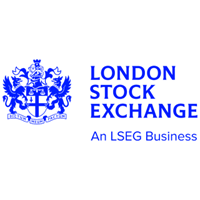-
BackWhat we doNumis is an ambitious, dynamic and innovative investment bank, driven to excel across all aspects of its delivery.Investment Banking
-
BackLatest newsRead the latest news about our business, our people and our work, find out about our next events and conferences.News
-
BackWho we areOur collaborative environment and distinctive way of excelling , is nothing without our great people.
-
BackOur board
Numis Indices - 2023 Annual Review
It is with great pleasure that Numis publishes the Annual Review of the Numis indices. Over the last 36 years, the Numis indices have been produced by Professor Elroy Dimson and Professor Paul Marsh of London Business School. Scott Evans took over Elroy Dimson’s role from 2016. Through their production of the NSCI and their associated research on smaller companies, the Numis index team has had a major impact on the practicalities of investing in smaller and mid-sized companies in the UK. With the launch of the Numis All Share index in 2021, Numis now provides a complete set of benchmarks for the UK equity market.

A difficult year for investors
2022 was a very poor year for UK small- and mid-caps. The winds of change were already blowing at the end of 2021. Inflation had climbed to 5.4% from its all-time low of 0.4%. The Bank of England responded in December by raising base rates from their all-time low of 0.1%. Conditions worsened as the year progressed, aggravated by the Russia-Ukraine war. By year-end, the Bank had hiked interest rates eight more times.
Three negative forces impacting the Numis indices
The left-hand chart below shows asset returns in 2022. With inflation hitting 10.7%, it is no surprise that long gilts returned −32%, their worst showing for more than a century. Long index-linked gilts fared worse at -35%, their worst year ever, and indicating a sizeable rise in real interest rate expectations. Equities, including small-caps, thus faced three interrelated negative forces.
First, inflation is bad for stocks as well as bonds. Second, the rise in real rates increased the discount rate applied to corporate cash flows, lowering valuations. Third, stocks usually perform poorly in rate hiking cycles – see the 2016 Annual Review. The surprise therefore is that the Numis All Share fell by just 2.5%, beating the world equity return as we will see later in the Review. While, after inflation, the real return falls to -12%, this figure is still unexpectedly robust.
2022 was the year of the megacap, but not the small-cap
The explanation, as we will see below, is that 2022 was a year of strong returns for a handful of UK mega-caps. It was certainly not a good year for small-caps, with the flagship Numis index, the NSCI XIC, returning -17.9%. Given the background, this was to be expected. Equities generally perform poorly in hiking cycles, but small-caps tend to do worse, with a negative small-cap premium – see the 2016 Annual Review.
Seeking comfort in the long-run: annualised small-cap premium of 3.1%
Bad years happen, and when they do, it is cheering to remind ourselves of the long run record, shown in the right-hand chart. Over the last 68 years, the annualised inflation rate was 4.7%. All the asset classes shown beat inflation, i.e., had positive real returns. They also show a consistent pattern of higher returns for higher risk assets.
The safest asset class, Treasury Bills gave an annualised return of 6.1%, followed by long index-linked gilts at 6.2% (since their introduction in 1981), long gilts at 6.9% and house prices at 7.8%. Equities, the riskiest asset class, did best of all, with the Numis All Share giving an annualised return of 11.5%, and with small-caps, measured by the NSCI XIC topping the table with an annualised return of 14.2%. Over the long-run, the UK small-cap premium has been 3.1% per annum (NSCI XIC versus Numis Large Cap XIC). Investing in small-caps over the long-run has been a winning strategy.
If you would like to know more, please contact w.wallis@numis.com.




